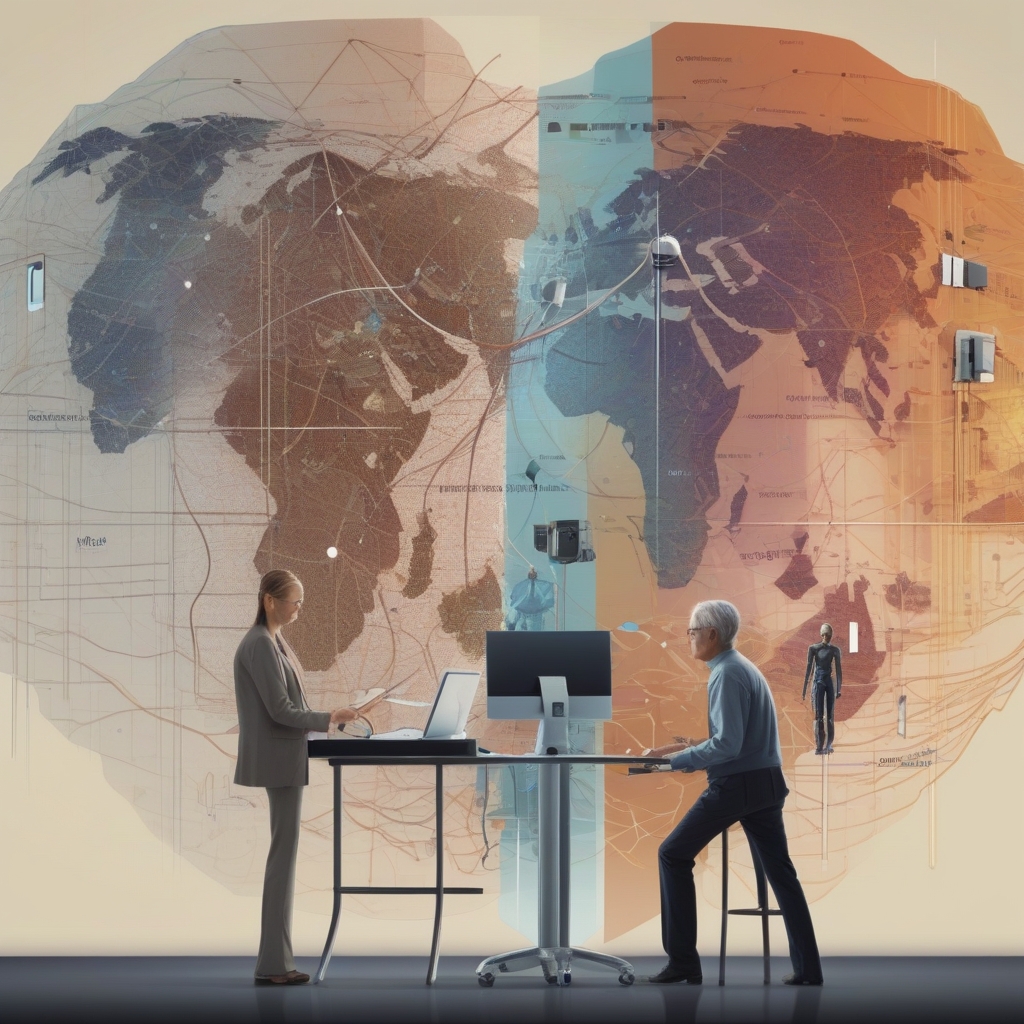The Intersection of AI and an Aging Workforce
The American economy is currently navigating a unique crossroads. At the intersection of artificial intelligence (AI), an aging workforce, and globalization lies the potential for massive economic transformation. As the United States confronts these interwoven issues, the nation is faced with opportunities and challenges that will define the economic landscape for years to come.
The Aging Workforce: A Closer Look
The demographic landscape of the U.S. workforce is shifting. The baby boomer generation, originally heralded as a labor powerhouse, is transitioning into retirement. With the U.S. Census Bureau predicting that by 2030, one in five Americans will be 65 or older, the economic implications are profound.
- Delayed Retirements: Many older workers are choosing to remain in the workforce, driven by financial necessity or personal preference. This trend brings valuable experience but also raises concerns about job opportunities for younger generations.
- Skills Gap: As these seasoned professionals exit, they take with them a wealth of knowledge. The challenge is to transfer these skills to younger employees while ensuring they’re equipped for modern demands.
AI: A Catalyst for Change
Artificial Intelligence is not just a buzzword in today’s economy—it is a transformative force. Its potential to enhance productivity, drive innovation, and automate routine tasks is immense.
- Automation and Efficiency: AI technologies are performing tasks that previously required human intervention, from customer service to data analysis. This shift allows human workers to focus on more complex, value-added activities.
- Creation of New Roles: Contrary to fears of mass job displacement, AI is paving the way for new roles. AI specialists, data scientists, and machine learning engineers are just a few of the positions that have emerged because of AI’s expansion.
Globalization’s Role in the New Economy
While AI and an aging workforce shape the domestic scene, globalization adds another layer of complexity. Economic activities are increasingly interconnected, influencing labor markets and technological developments worldwide.
- Competition and Collaboration: As companies compete globally, they must also collaborate across borders. This duality enriches market opportunities but exacerbates the pressure on the U.S. workforce to remain competitive.
- Access to Global Talent: Organizations are no longer constrained by geographic boundaries when hiring talent. This presents a double-edged sword for domestic workers but significantly expands potential labor pools.
Adapting to a Changing Landscape
The fusion of AI, an aging workforce, and globalization necessitates a comprehensive approach to maintain economic stability and growth.
Leveraging AI for Inclusivity
AI should be utilized to foster inclusivity within the workforce. Here’s how companies can harness AI’s benefits:
- Encouraging Lifelong Learning: Employers should invest in training and development programs leveraging AI-based platforms. These can include personalized learning systems that accommodate various learning styles and paces.
- Accessible Work Environments: AI can optimize workspaces to make them more accessible to older employees. Tools like voice recognition and ergonomic robotics can assist those with physical limitations.
Policy and Regulatory Support
Governments play a crucial role in this transition. By crafting forward-thinking policies, they can ensure economic resilience:
- Flexible Retirement Policies: Encouraging phased retirement options can help older workers gradually transition out of the workforce while mentoring younger colleagues.
- Investment in Education: Increasing funding for STEM (science, technology, engineering, and mathematics) education can help equip younger generations with the skills necessary for an AI-dominated economy.
Conclusion: Embracing the Future
The interaction between artificial intelligence, an aging workforce, and the forces of globalization is redefining the American economy. This period of transition holds the potential for innovation and enhanced prosperity, provided that businesses and policymakers respond with agility and foresight.
As organizations integrate AI into their operations, they must remain committed to workforce inclusivity and adaptability. By prioritizing policies that cater to all age groups and encouraging the development of a diverse set of skills, the U.S. can embrace a future where technology and human ingenuity thrive in harmony.
The journey forward is not without its hurdles, but with strategic planning and collaboration, the United States can emerge stronger, nurturing a robust economy for generations to come.

Leave a Reply